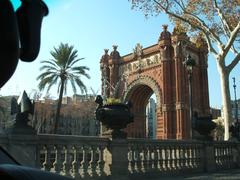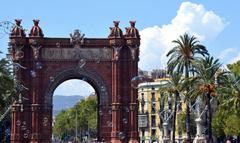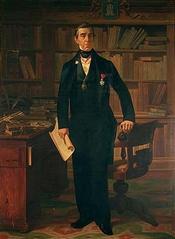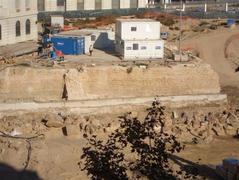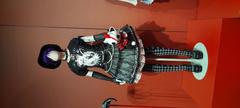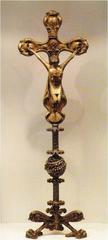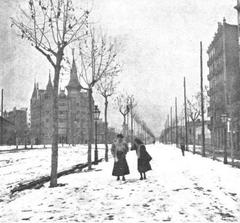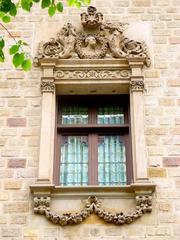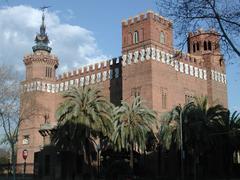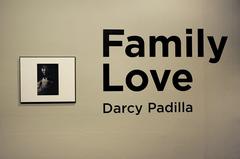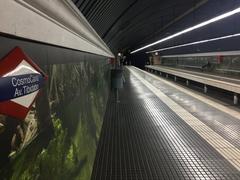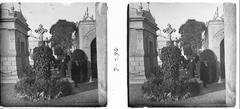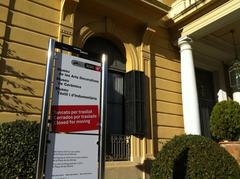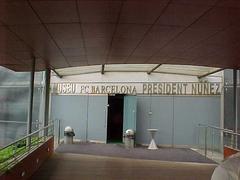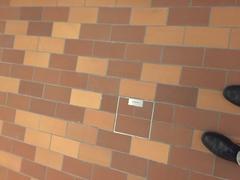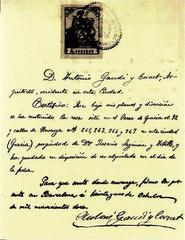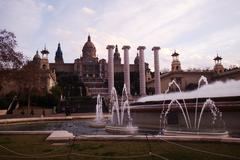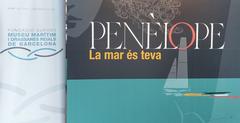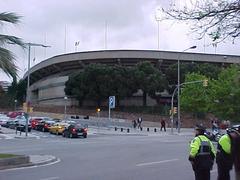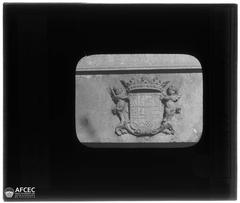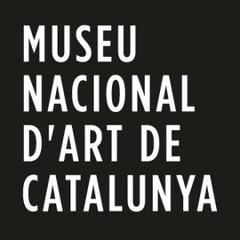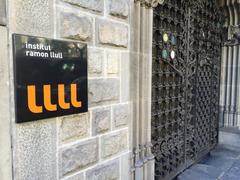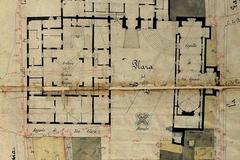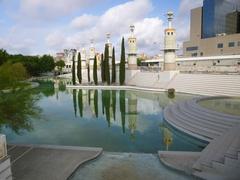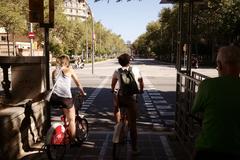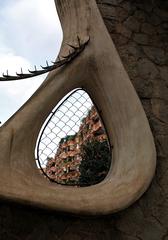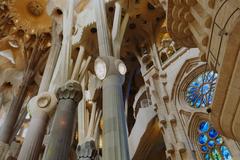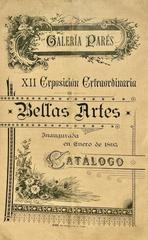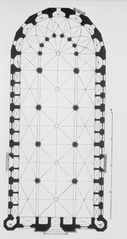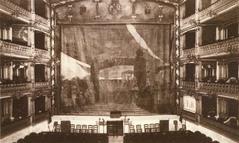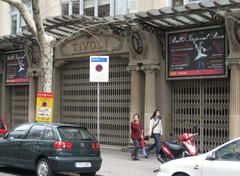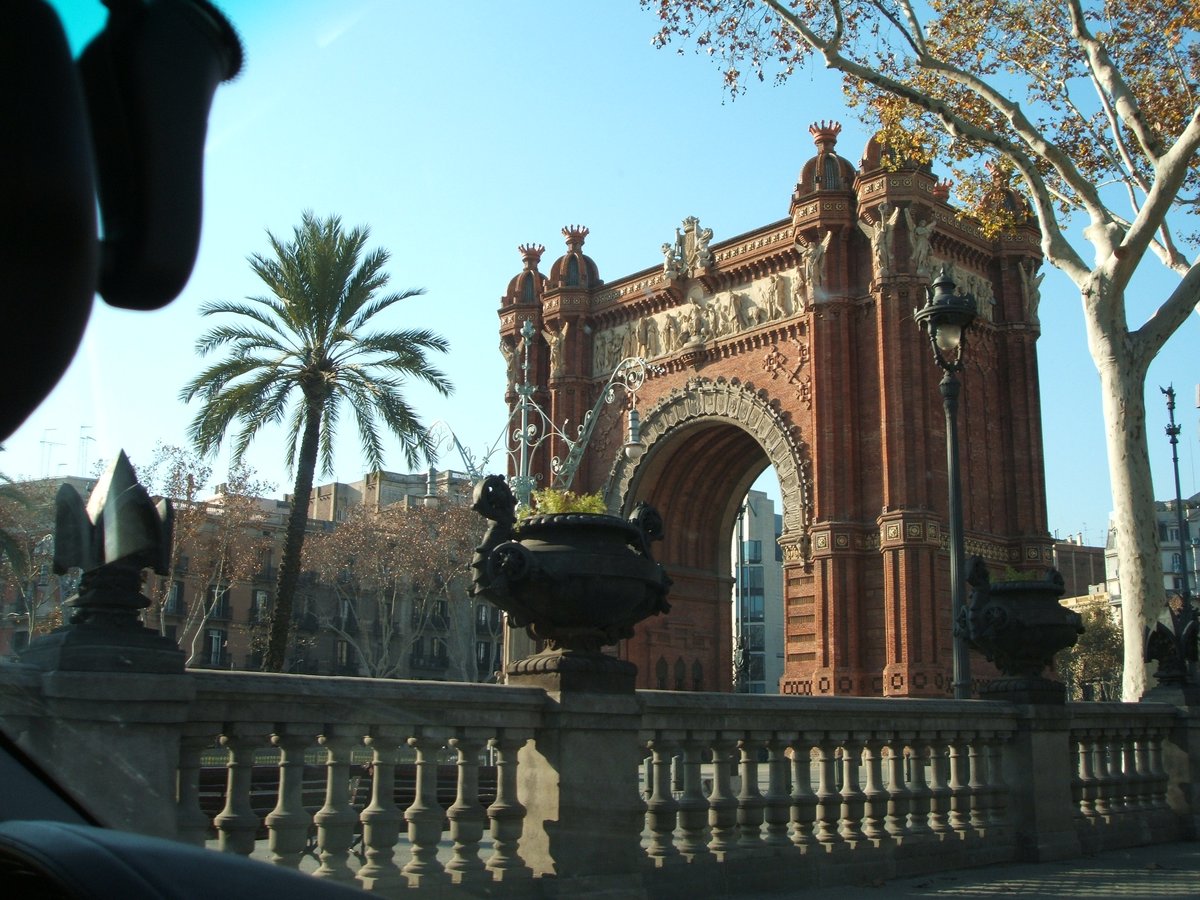
Visiting Hours and Tickets for Arc de Triomf in Barcelona: Your Ultimate Guide
Date: 16/07/2024
Introduction
Table of Contents
- Introduction
- History
- Cultural Importance
- Architectural Features
- Role in Tourism
- Nearby Attractions
- Photography Tips
- Accessibility
- Safety Tips
- Local Customs and Etiquette
- Guided Tours
- Souvenirs and Shopping
- Dining Options
- Events and Festivals
- FAQ
- Conclusion
History
Origins and Construction
The Arc de Triomf was constructed as the main entrance to the 1888 Barcelona World Fair, also known as the Universal Exposition. Designed by the Catalan architect Josep Vilaseca i Casanovas, the arch was built between 1887 and 1888. Standing at a height of 30 meters (98 feet), the arch is made of red brick, a common material in Catalan architecture during that period.
Architectural Style
The Arc de Triomf exemplifies Moorish Revival architecture, drawing inspiration from the Moorish architecture of medieval Spain. Notable features include intricate brickwork, horseshoe arches, and decorative elements characteristic of this style.
Symbolism and Decorations
The front frieze, titled “Barcelona rep les nacions” (Barcelona Welcomes the Nations), was created by Josep Reynés and symbolizes the city welcoming visitors to the World Fair. The opposite frieze, “Recompense,” by Josep Llimona, represents the rewards of hard work and dedication. The arch is also decorated with the coats of arms of the 49 Spanish provinces, emphasizing unity and national pride. The top of the arch features a series of sculptures by Manuel Fuxà and Pere Carbonell, representing fame and glory.
Cultural Importance
A Symbol of Modernity
The Arc de Triomf is more than just an architectural landmark; it is a symbol of Barcelona’s transformation into a modern, cosmopolitan city. The 1888 World Fair was a pivotal event that showcased Barcelona’s industrial and cultural advancements, and the arch remains a testament to that era of progress. It stands as a reminder of the city’s ability to blend tradition with innovation, a theme that continues to define Barcelona’s identity.
A Hub for Public Events
Today, the Arc de Triomf is a central hub for various public events and celebrations. It serves as a starting point for parades, marathons, and cultural festivals, making it an integral part of the city’s social fabric. The surrounding area, including the Passeig de Lluís Companys and the nearby Ciutadella Park, provides a vibrant space for locals and tourists to gather and enjoy outdoor activities.
Artistic Influence
The Arc de Triomf has also influenced contemporary art and design in Barcelona. Its unique architectural style and decorative elements have inspired local artists and architects, contributing to the city’s rich artistic heritage. The arch is frequently featured in photography, paintings, and other forms of visual art, further cementing its status as an iconic symbol of Barcelona.
Architectural Features
Structural Elements
The Arc de Triomf stands 30 meters (98 feet) tall and is 28.5 meters (93.5 feet) wide. Its design incorporates a series of arches and columns, creating a sense of depth and grandeur. The use of red brick, combined with the intricate ceramic decorations, gives the structure a warm and inviting appearance. The arch is supported by a robust foundation, ensuring its stability and durability over the years.
Decorative Details
One of the most striking features of the Arc de Triomf is its detailed ceramic work. The friezes and sculptures are crafted with precision, showcasing the artistic talent of the period. The use of bright colors and intricate patterns adds to the visual appeal of the arch. The ceramic decorations include floral motifs, geometric patterns, and allegorical figures, each contributing to the overall narrative of progress and unity.
Restoration and Preservation
Over the years, the Arc de Triomf has undergone several restoration projects to preserve its structural integrity and aesthetic beauty. These efforts have included cleaning the brickwork, repairing damaged sculptures, and restoring the ceramic decorations. The most recent restoration project was completed in 2017, ensuring that the arch remains a well-preserved historical landmark for future generations to appreciate.
Role in Tourism
A Must-Visit Landmark
The Arc de Triomf is one of Barcelona’s most visited landmarks, attracting millions of tourists each year. Its central location, near other major attractions such as the Ciutadella Park and the Gothic Quarter, makes it an ideal starting point for exploring the city. Visitors are drawn to the arch not only for its historical and architectural significance but also for the vibrant atmosphere of the surrounding area.
Guided Tours and Educational Programs
Several guided tours and educational programs are available for visitors interested in learning more about the Arc de Triomf and its historical context. These tours often include detailed explanations of the arch’s architectural features, the symbolism of its decorations, and its role in the 1888 World Fair. Educational programs are also offered for school groups, providing an engaging way for students to learn about Barcelona’s history and culture.
Photographic Opportunities
The Arc de Triomf is a popular spot for photography enthusiasts, offering numerous opportunities for capturing stunning images. The arch’s unique design and vibrant colors make it a perfect subject for both amateur and professional photographers. The surrounding area, with its tree-lined avenues and bustling public spaces, provides a picturesque backdrop for photos.
Accessibility and Visitor Amenities
The Arc de Triomf is easily accessible by public transportation, with several bus and metro lines stopping nearby. The area is also pedestrian-friendly, with wide sidewalks and designated bike lanes. Visitor amenities include information kiosks, restrooms, and nearby cafes and restaurants, ensuring a comfortable and enjoyable experience for tourists.
Visiting Hours and Ticket Information
The Arc de Triomf is accessible to the public 24 hours a day, seven days a week. There is no admission fee to visit the arch, making it an affordable activity for tourists. While the arch itself does not require tickets, some guided tours or special events in the area might have associated costs. It’s recommended to check in advance if you plan on participating in any guided tours.
Nearby Attractions
Parc de la Ciutadella
Just a short walk from the Arc de Triomf, this park is one of Barcelona’s largest green spaces. It features a beautiful lake, a zoo, and the Catalan Parliament building.
El Born Cultural Center
Located in the El Born neighborhood, this cultural center offers insights into Barcelona’s history and hosts various exhibitions and events.
Gothic Quarter
A historic area with narrow medieval streets, the Gothic Quarter is home to the Barcelona Cathedral, Plaça Reial, and numerous shops and restaurants.
Photography Tips
Golden Hour
Visit during the early morning or late afternoon when the sunlight is softer and creates a warm glow on the monument.
Symmetry
The Arc de Triomf’s design features symmetrical elements, making it an excellent subject for centered, symmetrical shots.
Wide-Angle Lens
Use a wide-angle lens to capture the entire monument and its surroundings, especially if you want to include the palm-lined Passeig de Lluís Companys in your frame.
Details
Don’t forget to capture close-up shots of the intricate carvings and sculptures that adorn the Arc de Triomf.
Accessibility
The Arc de Triomf is accessible to visitors with mobility impairments. The surrounding area is flat and paved, making it easy to navigate with wheelchairs or strollers. Additionally, the nearby metro station (Arc de Triomf) is equipped with elevators and ramps for accessibility.
Safety Tips
Pickpocketing
Be aware of your belongings, especially in crowded areas. Keep your valuables secure and avoid carrying large amounts of cash.
Night Visits
While the area around the Arc de Triomf is safe, it’s always best to stay in well-lit, populated areas if visiting at night.
Emergency Numbers
In case of an emergency, dial 112 for immediate assistance.
Local Customs and Etiquette
Language
While Spanish is widely spoken, Catalan is the official language of Barcelona. Learning a few basic phrases in Catalan can be appreciated by locals.
Dining
Meal times in Barcelona are later than in many other countries. Lunch is typically served between 1:30 PM and 3:30 PM, and dinner starts around 9 PM.
Tipping
Tipping is not obligatory but is appreciated. A small tip (5-10%) for good service is customary in restaurants and cafes.
Guided Tours
Walking Tours
Several companies offer walking tours that include the Arc de Triomf and nearby attractions. These tours provide historical context and interesting anecdotes about the monument.
Bike Tours
Explore the area on a bike tour, which often includes stops at the Arc de Triomf, Parc de la Ciutadella, and other landmarks.
Private Tours
For a personalized experience, book a private tour with a local guide who can tailor the itinerary to your interests.
Souvenirs and Shopping
El Born
This trendy neighborhood is home to numerous boutiques, artisan shops, and galleries where you can find unique souvenirs and gifts.
La Rambla
A short walk from the Arc de Triomf, La Rambla is a bustling street with a variety of shops, markets, and street vendors.
Dining Options
Cafes and Bakeries
Enjoy a coffee or pastry at one of the many cafes in the area. Popular options include Brunch & Cake and Satan’s Coffee Corner.
Tapas Bars
Experience traditional Spanish tapas at nearby bars such as El Xampanyet and Bar del Pla.
Restaurants
For a more substantial meal, try local favorites like Cal Pep or 7 Portes.
Events and Festivals
La Mercè
Barcelona’s largest annual festival, held in September, features parades, concerts, and fireworks, with some events taking place near the Arc de Triomf.
Sant Jordi’s Day
Celebrated on April 23rd, this day is marked by book and flower stalls throughout the city, including near the Arc de Triomf.
FAQ
Q: What are the opening hours of Arc de Triomf?
A: The Arc de Triomf is accessible 24/7 as it is an open-air monument.
Q: How much do tickets to Arc de Triomf cost?
A: There is no entrance fee to visit the Arc de Triomf.
Q: Are guided tours available?
A: Yes, there are various guided tours available, including walking tours, bike tours, and private tours.
